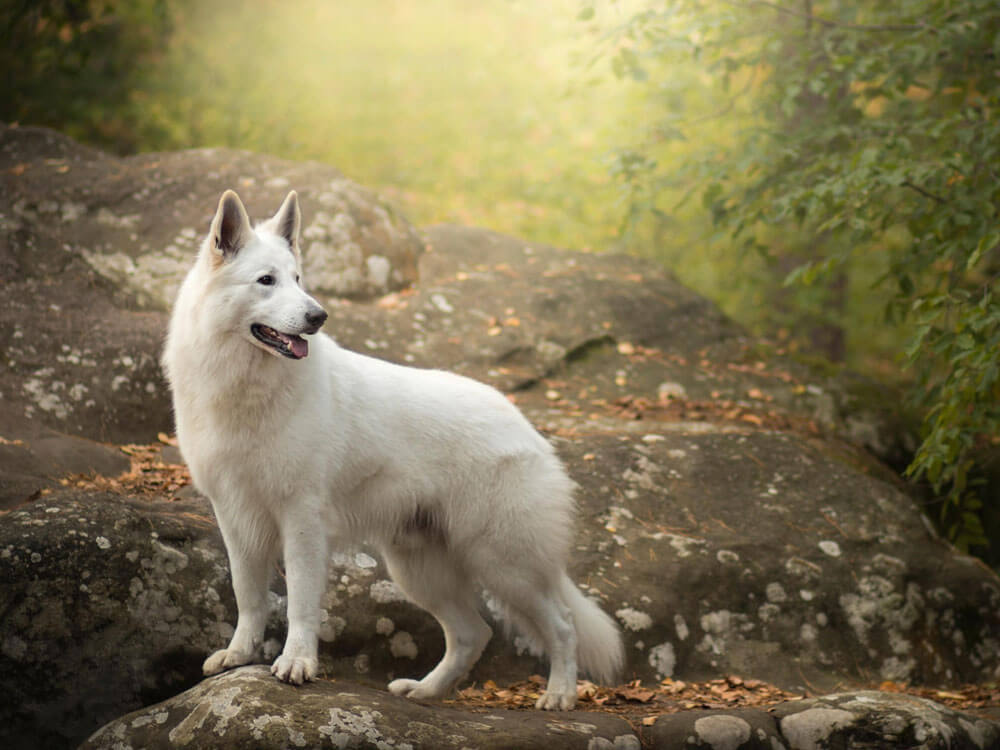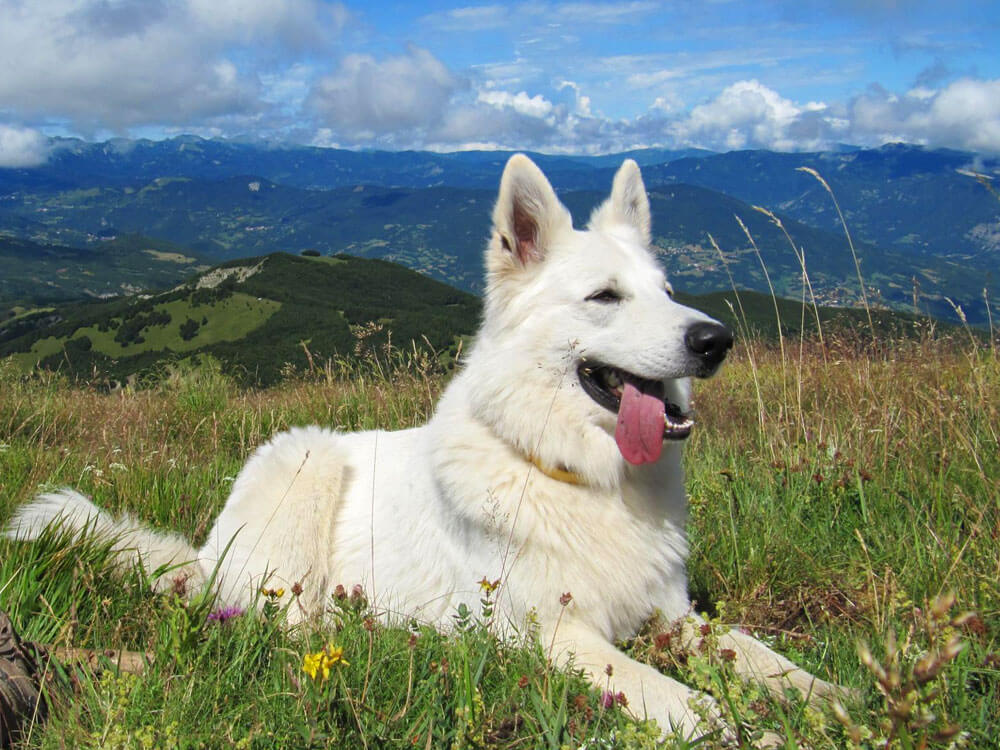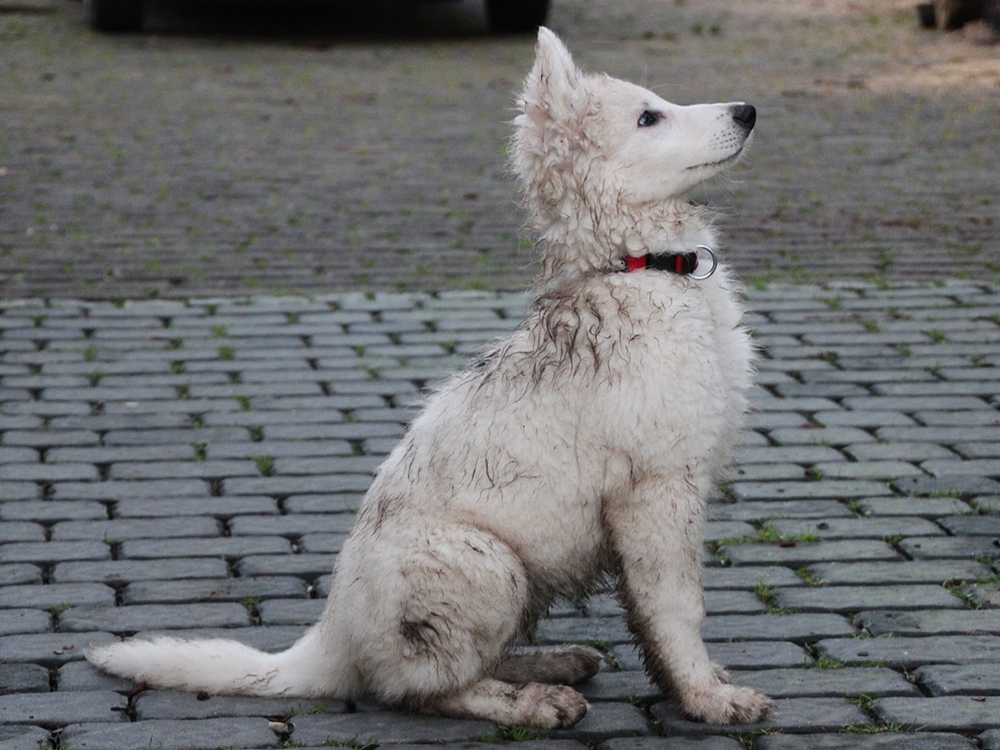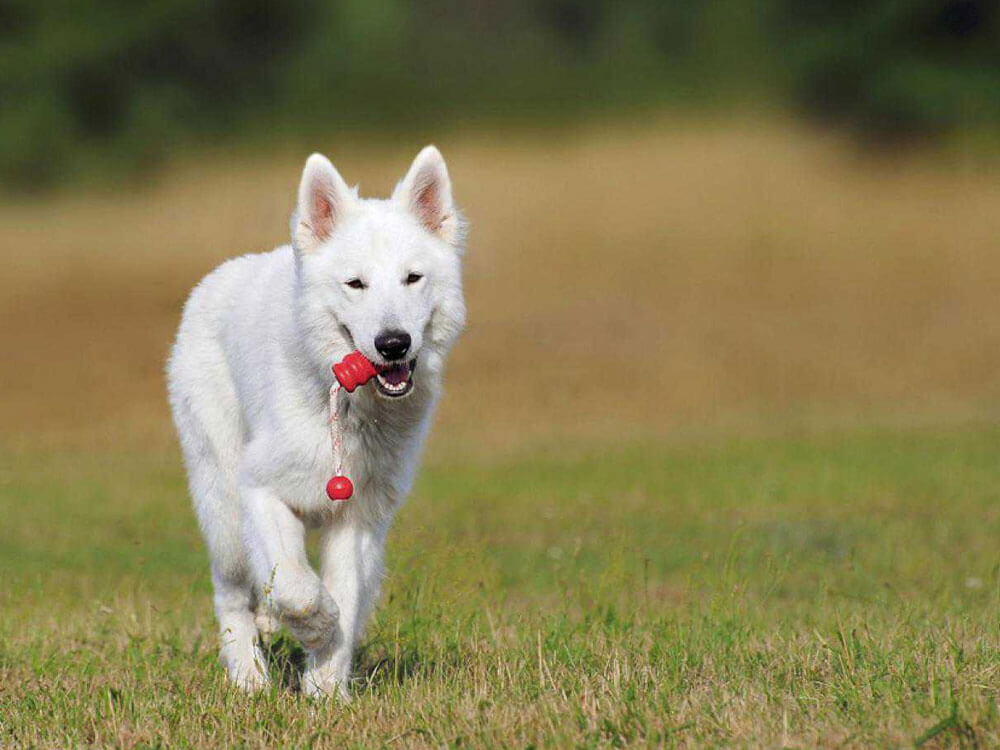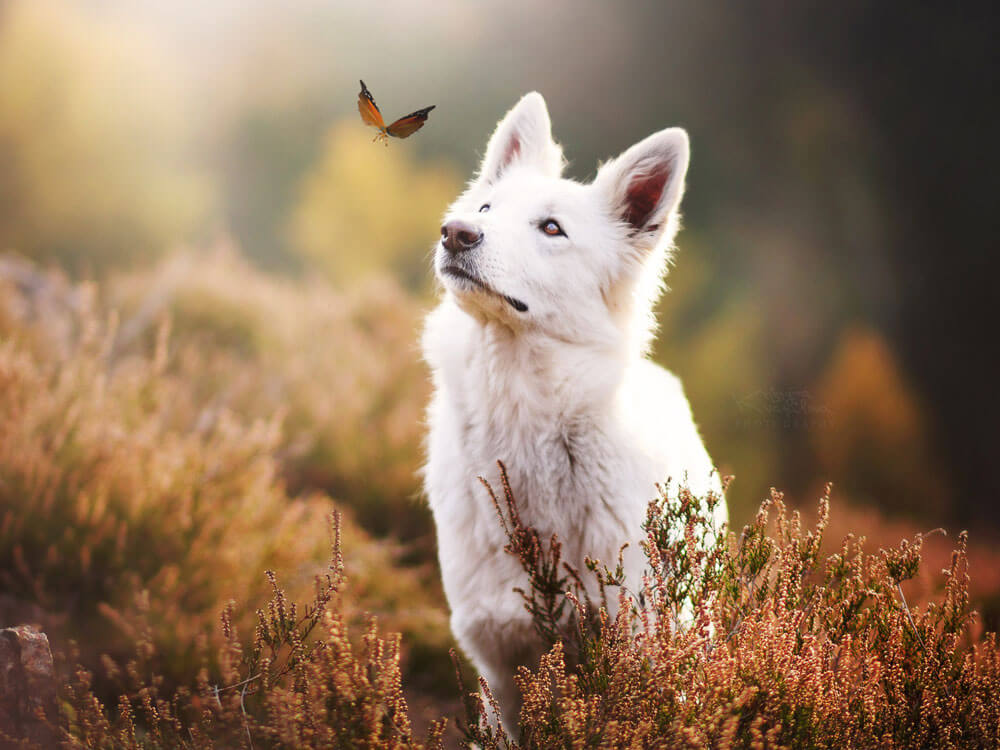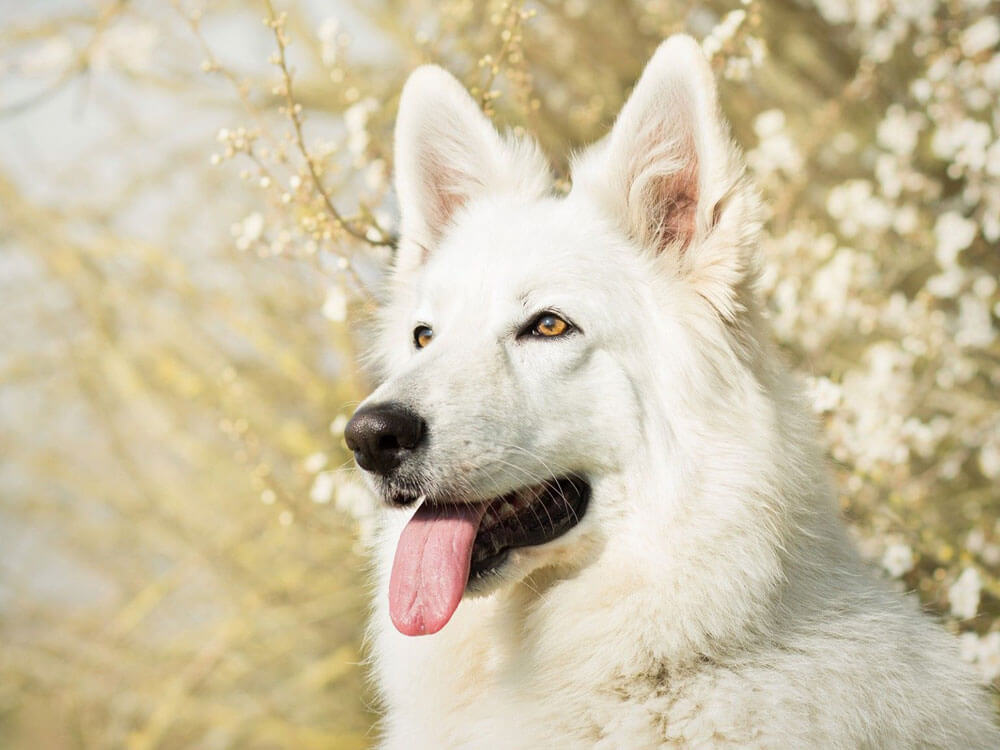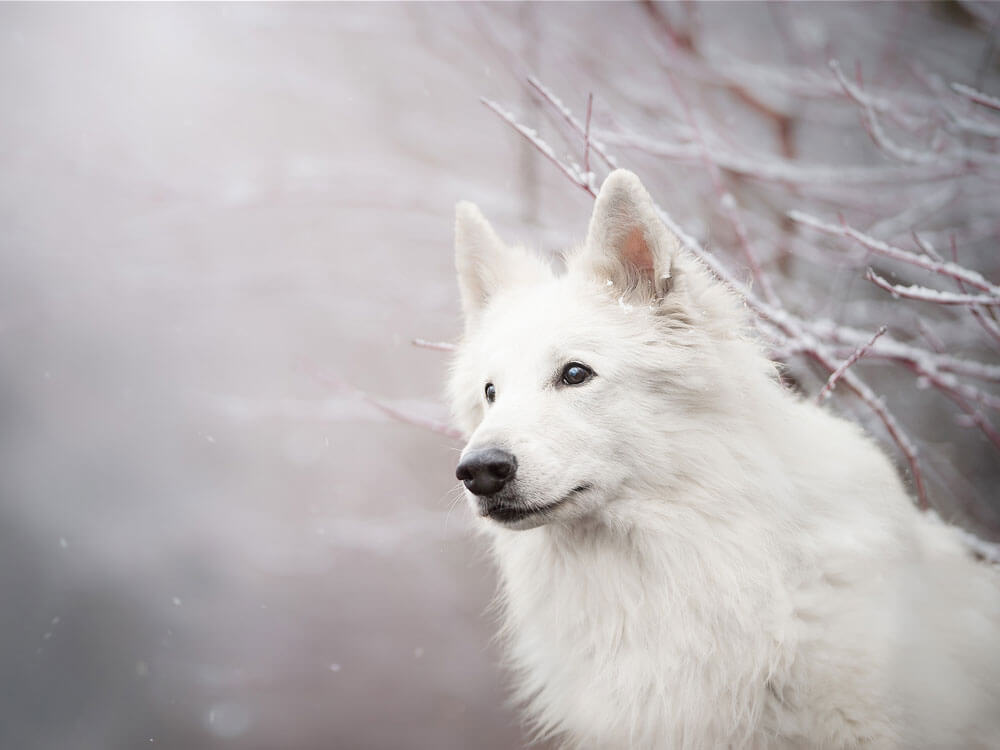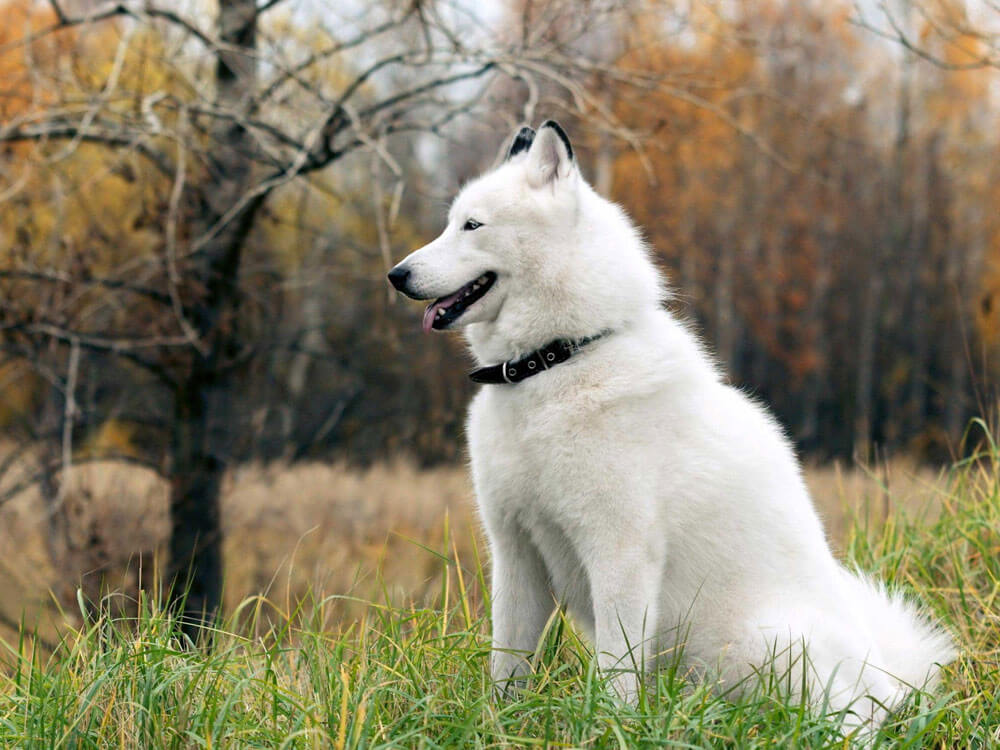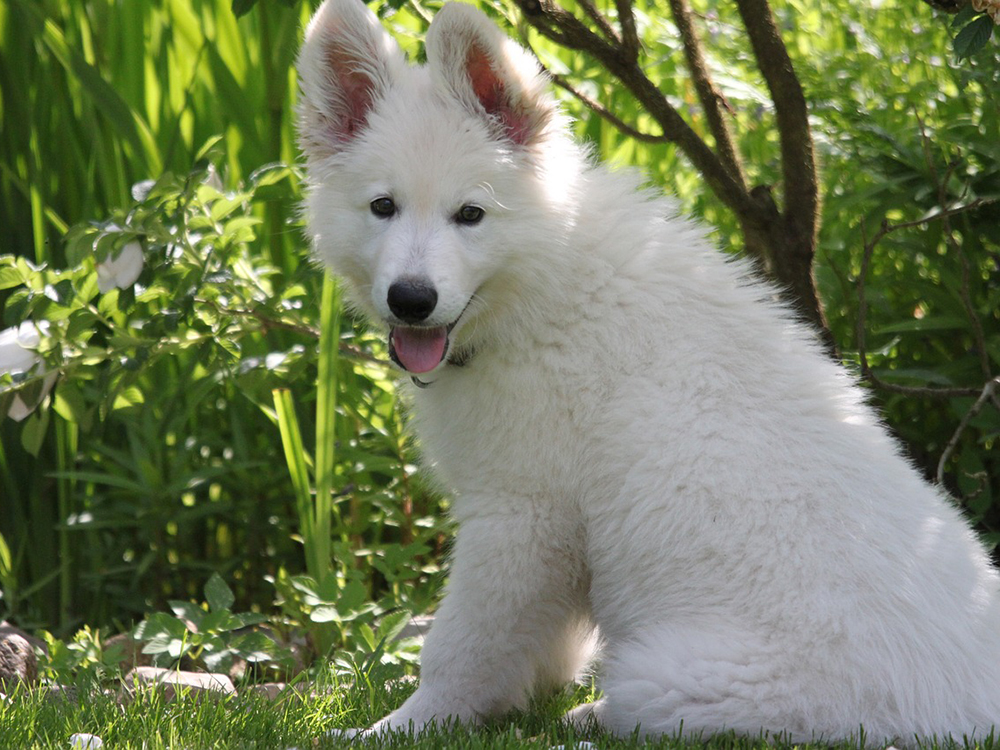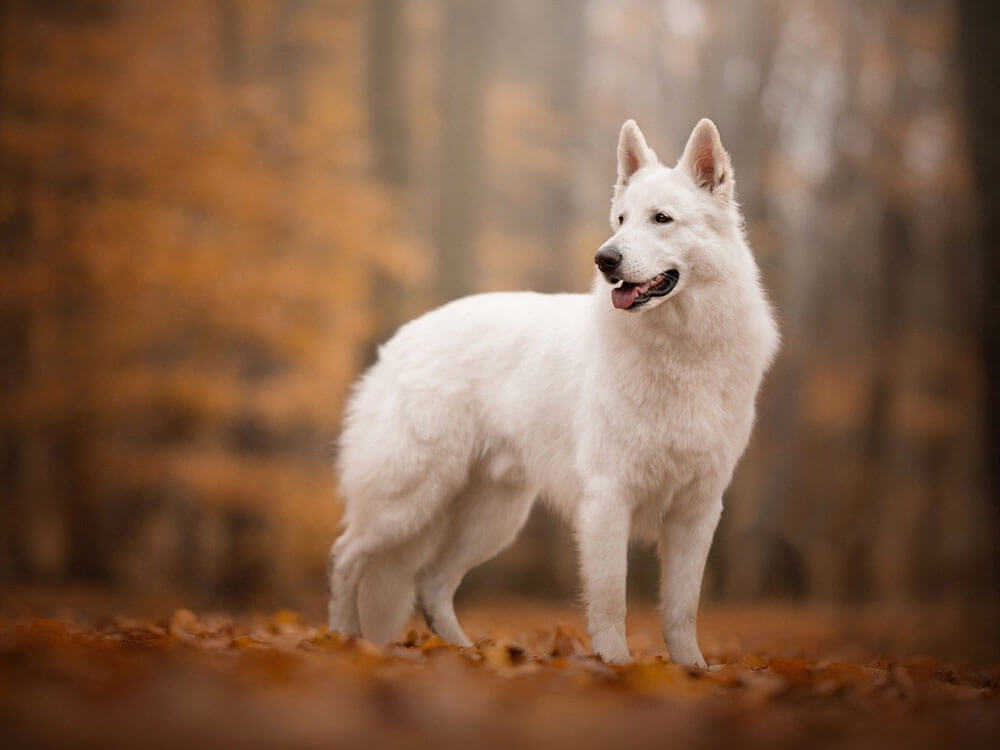
White Swiss Shepherd Breed Pictures
Vital Breed Stats
| Height: | 56 - 66 cm M | 56 - 61 cm F |
| Weight: | 35 - 39 kg M | 35 - 39 kg F |
| Breed Group: | Hound Dog Group |
| Life Expectancy: | 15 - 18 years |
| KC Registered: | No |
Breed Characteristics
| Size: |  |
| Grooming: |  |
| Exercise Level: |  |
| Barking Level: |  |
| Good with Children: |  |
| Good with other pets: |  |
| Affectionate: |  |
| Protective: |  |
| Cost to Keep: |  |
Give a thumbs up if you love the White Swiss Shepherd

0
More About the Breed
History
The White Swiss Shepherd (WSS) emerged from American and Canadian White Shepherd dogs. The earliest WSS in Switzerland is said to be born in 1967 of “Lobo White Burch,” a male American White Shepherd, and “White Lilac of Blinkbonny,” a female White Swiss Shepherd imported from the UK. They were later bred with other canine dogs from the US and the UK.
The WSS, White Shepherd, and White German shepherd all have the same ancestor—the German shepherd. The emergence of the white variants of the German shepherd was due to the development of the white lineage of the GS. It has been said that a great grand ancestor of the first GS registered was white. As such, the White Swiss Shepherd has a similar genetic makeup as the German shepherd. However, there are some differences in the body shape and structure, movement, and temperament.
Although all GS, no matter the colour, were initially accepted for registration, the white varieties were later rejected when more emerged over time. In 1991, the White Swiss Shepherd became a recognised breed in Switzerland. Other European countries followed suit in succeeding years. In 2011, the WSS was recognised by the Fédération Cynologique Internationale as a distinct breed. Finally, in 2017, the Kennel Club acknowledged the White Swiss Shepherd Dog as the 219th pedigree canine breed in its books. It has been classified under the pastoral group.
Appearance
Similar to the German shepherd in size, the White Swiss Shepherd’s height ranges from 55–66 centimetres. Its average weight falls anywhere between 25–40 kilograms.
Having a muscular, medium-sized body similar to that of the GS, the White Swiss Shepherd has a tail shorter than its body is long. It gives the impression of being alert and athletic, with a clean-cut, wedge-shaped head that is well-proportioned to its body.
Its medium-sized and typically black nose dispels the false notion that the WSS is the “albino” version of the GS. Their muzzles, longer than an average dog’s skull, are powerful and straight. It houses a strong jaw decked with teeth that close into a perfect scissor bite. Its ears, which are erect and faced forward, are high, elongated, and triangular.
The White Swiss Shepherd’s belly is fairly tucked up, lending it a graceful appearance. Its back legs are strong, and the back feet are a bit longer than the front. The oval-shaped feet are studded with dark nails and are firmly padded underneath. The most distinctive feature of the WSS is its gleaming white and thick double coat.
Grooming
The White Swiss Shepherd have pristine coat which is surprisingly resistant to dirt and can easily be groomed. When muddy, the dirt can be easily brushed off the coat when dry. A brief dip in the water can effectively clean muddied coats in no time. However, the WSS requires frequent brushing. This dog breed, like the German shepherd, tends to shed much all year, especially during spring and autumn.
The White Swiss Shepherd looks very similar to its snow-coloured cousins, the White Shepherd and the White German Shepherd. The major difference between the WSS and WGS is the hip angulation, which is more upright in the WSS. The WSS and the WGS can be regarded as standing on two extremes, with the White Shepherd in the middle serving as a transition breed in between the WSS and WGS.
Temperament
Intelligence
Highly intelligent, this herding dog can learn new skills very quickly and likes being given something to do. However, it can also learn bad habits fast, thus requiring consistent training at an early age. Its trainability and sensitive nature make it suitable for therapy and assistance services. It can also stand out in various dog sports.
As a loyal pet, the White Swiss Shepherd tends to follow its owners around, no matter the place. As such, it does not like to be left on its own and tends to be affected by separation anxiety. The White Swiss Shepherd may be wary of strangers and even bark at them, but it is not known to show aggression. This makes the White Swiss Shepherd suitable for watch dog duties.
The WSS likes to vocalise, although this tendency may be minimised whilst still young. However, it is not known to bark excessively. To help it become a confident and well-balanced dog, the White Swiss Shepherd should be socialised and trained early. They thrive best in active households with a clear alpha, as the White Swiss Shepherd needs significant direction and guidance.
Nutrition
Feeding
A White Swiss Shepherd puppy should be fed 3–4 times daily that is in accordance to their development stage. The serving portion, which also depends on the pup’s build, ranges from 265 grams to 463 grams for puppies aged 2–14 months old.
When the White Swiss Shepherd is 16 months old and beyond, it can be given adult food. For those weighing 25 kilograms, they are recommended serving portions ranging from 285–435 grams per day. This depends on their size and activity, of course. For those weighing 30 kilograms, about 318–485 grams daily can be given. Those 36–40 kilograms can be fed 354–601 grams of food daily.
Health
- Primary lens luxation
- Hip dysplasia
- Elbow dysplasia
- Skin allergies
- Bloat
Exercise
Cost of Ownership
Being a rare breed that only recently received official recognition from various canine institutions, it takes time to acquire a White Swiss Shepherd. You would have to be put on a waiting list in order to signify your interest in having a White Swiss Shepherd puppy. Expect to spend about £500 to £900 and upwards for one.
Insuring a White Swiss Shepherd may cost £25.3 (basic) to £86 (lifetime) a month. For food, you may spend around £30–£40 monthly. With veterinary care costs—vaccinations, boosters, and annual checks—the bill may reach £1,000 annually.
Overall, a WSS owner may spend about £60–£130 monthly, depending on the insurance coverage. For its lifetime (12–14 years), the expenses can range from £8,640 to £21,840.
White Swiss Shepherd Breed Highlights
- The White Swiss Shepherd is a mellower version of the German shepherd.
- Friendly, lively, and loyal, this dog breed makes a suitable pet for active families capable of fulfilling its high physical and mental stimulation requirements.
- Although not suitable as a guard dog, this canine makes a good watch dog as it is wary of strangers and will bark at them. However, it is not known to show aggression.
- First-time owners may find the WSS a sensitive and gentle companion, eager to please and want to follow its owners wherever he goes.
- Its white coat, although dirt-resistant, needs frequent brushing as it sheds much all year.
- The WSS cannot tolerate being left on its own and is prone to separation anxiety.
- If not sufficiently exercised and mentally challenged, it may get bored and indulge in destructive behaviour.






